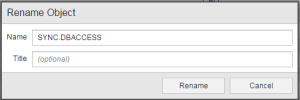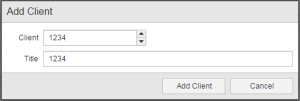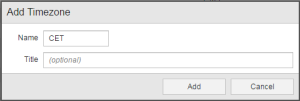Open topic with navigation
Defining Objects
Defining new objects involves a series of general steps that are always the same, no matter the type of object you are defining. This topic deals with them.
You add and define new objects to your system from the Process Assembly perspective.
- In the Process Assembly perspective open the Explorer.
- Click the Add Object button in the toolbar or right-click anywhere in the list and select Add Object to open the list of available object types.
- Select an item.
For some object types, subcategories are available. Click on the arrow icon on the left on the item to expand the available subcategories and select one.
- Click the Add Object button and the object is created immediately.
For most objects, the Rename Object dialog is displayed, where you can change its name:
When creating Client objects (CLNT) the dialog differs a little. Instead of an object name you enter the client number, which can be a number between 1 and 9999. Client 0 is reserved for the system client. Only an administrator of the system client (client 0) can add or edit a client object.
Time Zone (TZ) objects are also an exception. They are not created immediately but after clicking Add on the Add Time Zone dialog that is displayed:
- Enter a descriptive Name.
- Optionally, enter a Title. It should be short and descriptive, since it will be displayed in other areas of the system.
- Click onRename to create the object.
A new page opens where you can start with the object definitions.
Object definitions consist of a number of settings that are common to all of them and which are entered in the following three pages:
Additionally, executable objects have the following pages:
Additionally, parameters that are relevant only to the object you are creating are defined in object-specific pages. For detailed information please refer to the corresponding object description in Object Classes and Object Types.
Open topic with navigation


